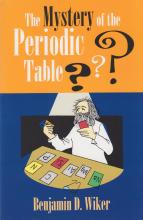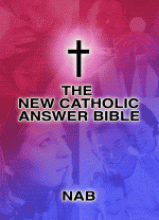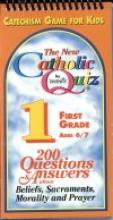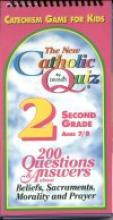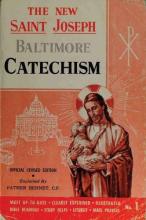No name
The Mysteries of Life in Children's Literature
This book is not too "scholarly" to enjoy, and I have truly enjoyed it. Each of the chapters discusses a different element of children's literature in the context of actual books. There is a complete synopsis of the book at this address:
http://www.neumannpress.com/mysoflifinch.html
Be forewarned: you will be running to your bookshelves to start reading some of these books to your children and to re-read them yourself.
The Mystery of Harry Potter
The Mystery of the Periodic Table
This new title from Bethlehem Books follows the tradition of Jeanne Bendick with her books on Archimedes and Galen by making scientific concepts accessible to ordinary people.
Dr. Wiker is a prolific author of articles on matters relating to science and the faith. He has taught at Thomas Aquinas College and Franciscan University of Steubenville.
Wiker takes us all the way back to the Neolithic era to begin his story of mankind's fascination with metals that started the development of the science of Chemistry. The various scientific characters that play a role in this story – from ancient Greek atomists to brilliant modern scholars – are interesting in and of themselves. We learn of the diligent John Dalton (1766-1844) who kept a daily journal called "Observations on the Weather" for 57 years; the daring and foolhardy Humphry Davy (1778-1829), who discovered laughing gas and a whole slew of elements, and Dimitrii Mendeleev (d. 1907) who discovered the order of the elements by 'playing cards.' A great deal of scientific content that led to the development of the Periodic Table is presented in these middle chapters. The content is made particularly accessible through Wiker's humorous, engaging style and the connections he makes between each scientist's interest in a particular subject and what that meant to scientific progress. He also has fun pointing out the errors scientists made that ironically caused some of the very greatest leaps in scientific knowledge.
The last three chapters can be a little harder to follow and students will benefit from working through them slowly and carefully studying the numerous diagrams. The publisher recommends that, although the book is generally accessible to ages 10 and up, these later chapters might be more understandable to slightly older children. I found that drawing up additional diagrams of my own helped me to follow the text better (particularly diagrams of the structures of the electron "shells"). Diligence in studying these last few chapters really pays off, though, as the final discoveries about the Periodic Table and the well-ordered nature of the relationships between the elements are absolutely fascinating.
Now, you might be asking yourself "Why would someone who teaches at Catholic colleges and writes for Catholic publications be so interested in the Periodic Table?" The answer is simple: The Periodic Table shows the relationships between the most basic elements that comprise everything on earth. It is phenomenal and mind-boggling how mathematically-ordered these elements are. This kind of order seen in nature is a powerful argument against random and chaotic theories of the origins of the world. I should also note that, although Dr. Wiker's interest in this topic is likely related to his faith, he never directly brings up the topic in his book. I'm really glad that he didn't. There's a time for laying it all on the table and a time for a little more subtlety. This sort of book allows readers to discover some of the "Wow!" of Science and later, gradually make the connection between the order of the elements and the awesomeness of the Creator who designed it all.
Highly and enthusiastically recommended! Probably the most fun I've ever had reading a science book. :)
The Narnia Cookbook
Commentary by Douglas Gresham
The New Catholic Answer Bible
- What is Apologetics?
- Does the Church Teach Evolution?
- Why is Catholic Worship Full of Rituals?
- What is the Holy Trinity?
- Aren't Statues a Form of Idolatry?
- Why Won't the Church Ordain Women?
- Why Are Abortion and Embryonic Stem Cell Research Wrong?
At the same time, no matter how terrible the evil caused by sin, God is great enough, and wise enough, to bring about through that evil an even greater good (see Gn 50:20, Rom 8:28).The first reference is what Joseph says to his brothers when they come to Egypt to get grain, while the second is the famous "All things work out for good for those who love God." Although these references do speak of God bringing good out of evil, it was not obvious to me that it was an "even greater good" than the one God would have brought about had the evil not taken place. In another place, insert K-3 (about divorce) refers to Mt. 19:9, which contains the (in)famous "exceptive clause." Unfortunately, the RNAB has a unique rendering of this exception as "unless the marriage is unlawful," which is an interpretation or commentary; the actual text literally reads "except for unchastity." I am uncomfortable with the tract treating this gloss as though it were really what the Bible says. It may work with someone who only uses this Bible version, but what happens when he encounters a different version, or a Protestant calls him on it? I consider these quibbles and overall, Thigpen and Armstrong have done an excellent job of explaining the Church's teaching on a variety of topics simply and accurately.
This book includes RNAB Bible text and reference aids, plus 88 pages of inserts for a total of 2008 pages.
The New Catholic Quiz: First Grade
This book provides 200 questions (50 each in four different categories based on the four sections of the Catechism of the Catholic Church - Beliefs, Sacraments, Morality and Prayer) to help children reinforce basic points of Catholic doctrine. Each page has a question from each category with answers on the back of the page. The color-coding makes for easy reading and checking of answers. My children really enjoyed the sometimes humorous choices for the multiple-choice questions. I thought these made the Quiz more engaging and helped them be more memorable for children. Quiz questions can be answered informally or in a game format where scores are kept. My children enjoyed this quiz book very much.
Sample questions from this book: (page one) Belief: God created the universe and everything in it. True or false? When a man and a woman get married they ________. (a. promise to love each other always, b. promise to drive the same car, c. promise to buy a house together) Why is life holy? (a. becaues it is short, b. because God let us do anything we want, c. because God, whog ives life, is holy) Who leads our prayers at Mass? (a. the priest, b. the server, c. the lector)
Imprimatur
The New Catholic Quiz: Second Grade
Based on the Catechism of the Catholic Church. See description above.
Sample questions from this book (page one) God the Father, the Son and the Holy Spirit are called ________. (a. the Communion of Saints, b. the Most Holy Trinity, c. the Beatitudes) The Eucharist helps us to ___________. (a. dream, b. think. c. love) Jesus teaches that forgiving others is better than revenge. True or false? Prayer is more like _________. (a. running away, b. looking for fun, c. thirsting for water)
Imprimatur
The New Saint Joseph Baltimore Catechism No.1
Though very inexpensive, the New Saint Joseph Baltimore Catechisms with explanations written by Father Kelley are worth their weight in gold. They are based on the Baltimore Catechism which was first approved by the Archbishop of Baltimore, James Cardinal Gibbons in 1885. The New Saint Joseph version goes beyond the simple question-and-answer format of the original catechism, it incorporates Holy Scripture with each lesson and includes discussion questions, a fill-in-the-blank section, and suggested Bible readings at the end of each lesson. The pictures themselves are a great teaching tool, as they illustrate spiritual truths.
Memorizing the questions and answers of the catechism provides the opportunity to build a religious foundation. This basic Catholic doctrinal foundation gives children the tools necessary to defend their faith when they are old enough to apply reason and logic, much like memorizing the alphabet before learning to read and analyze literature.
In addition to memorization of the question and answers, I copy the accompanying Scripture onto a 3 by 5 index card. Then the children and I memorize the Scripture verse and discuss how it applies to the week's lesson. I am careful to emphasize the Scripture as a part of a whole picture rather than putting too much emphasis on individual verses. We review the Q&A and Scripture each day for a week, before moving on to the next lesson. Book no. 1 has the Baltimore questions and answers divided into three parts: The Creed, The Commandments, and The Sacraments and Prayer. Its recommended use is for grades three through five.
This book is available from nearly all Catholic homeschool providers, including those listed below.
The New Testament and the Psalms (Revised Standard Version, Second Catholic Edition)
Also Available Leather Bound.


